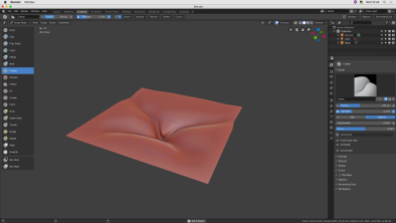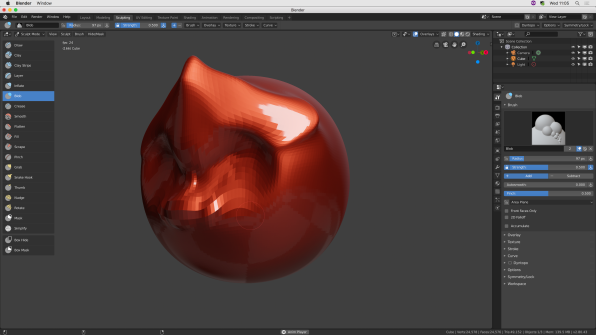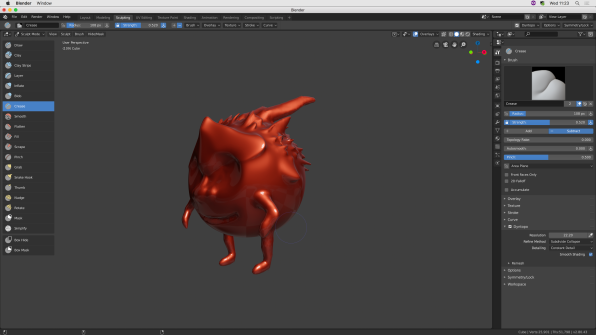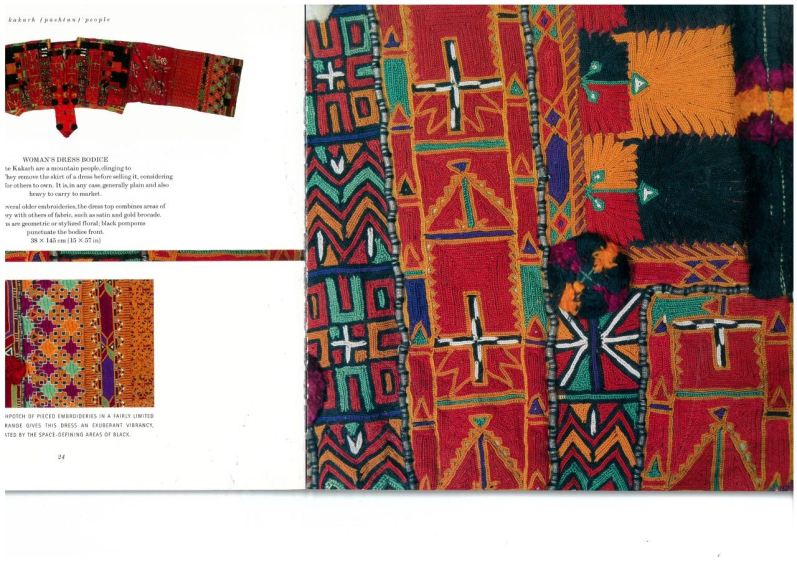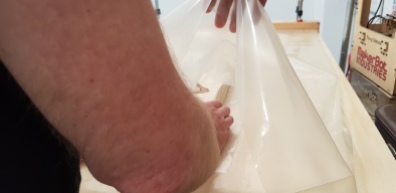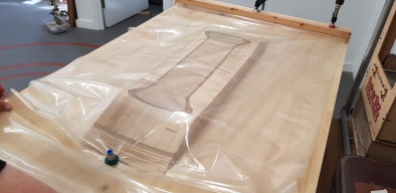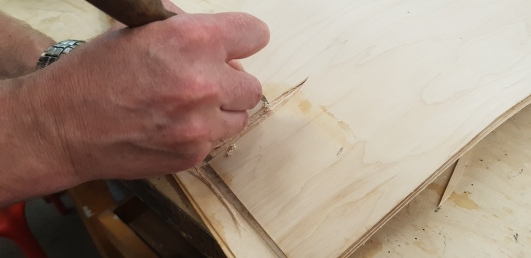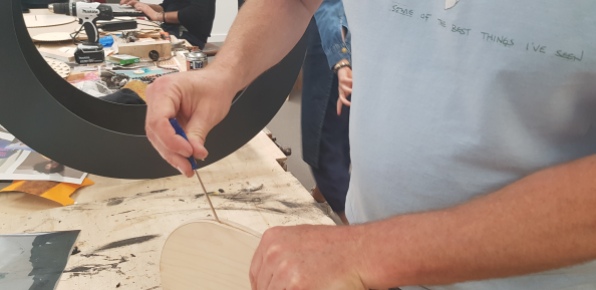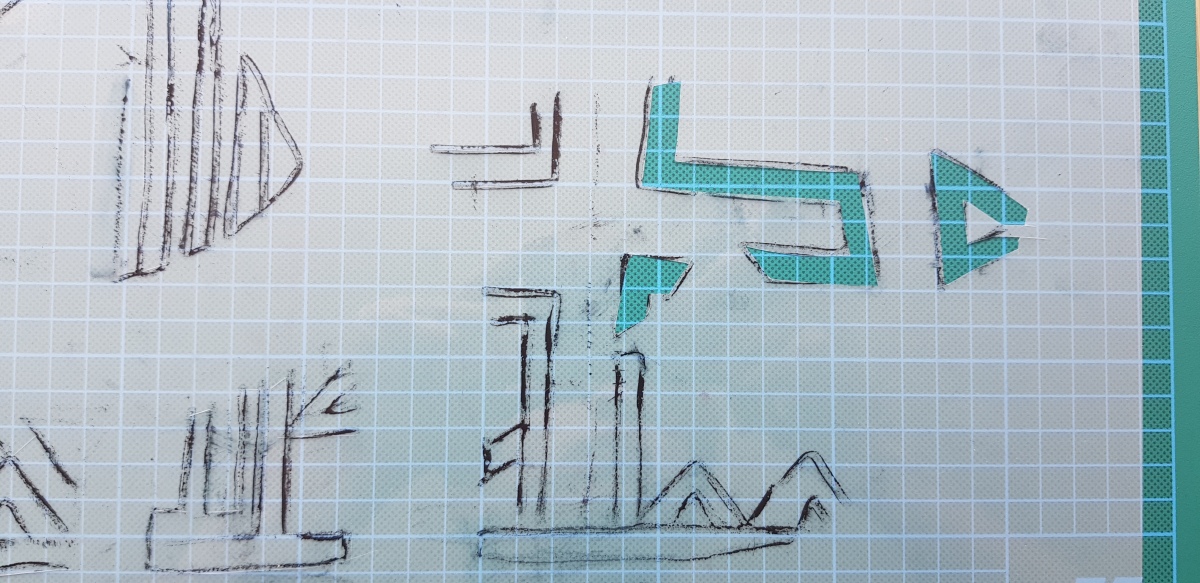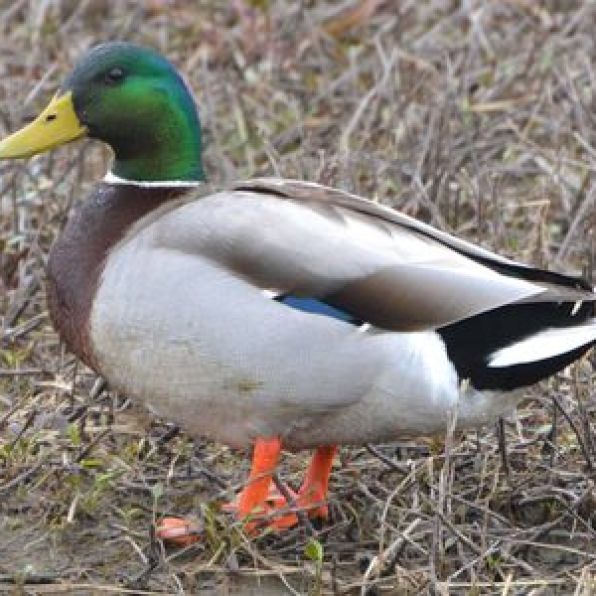STUDIO
This was by far the hardest concept I had to come up with this year. I struggled for weeks to find an idea, let alone a language. My initial plan was to find a language that isn’t common, something that is either secretly spoken or very niche. Something that belongs to a small community. A classmate of mine found out about hobo language and I thought that was absolutely fascinating, that was the kind of thing I was looking for. My efforts in the end proved futile, the harder I looked for a special language the less I found. I certainly did find some interesting subjects, though nothing that excited me.
SECRET LANGUAGES OF BACTERIA
I watched Fatima AlZahra’a Alatraktchi: To detect diseases earlier, let’s speak bacteria’s secret language. This Ted Talk explored how bacteria communicate to each other and determine what goes on in our body. It was a very interesting subject and there was something I could do with it. However, I didn’t feel a connection to the subject and felt I was going in the wrong direction. I thought they had some kind of code like morse, it was basic chemistry in the end. As incredible as the discovery, it wasn’t something I was passionate about. I couldn’t use the language, because chemistry uses the Latin alphabet, which is prohibited for this project.
POLARI
This was the secret language for English gay men dating from the 19th century all the way to the 1960s. It mixed a variety of slang from Romani, London slang, Sailor slang, thieves cant etc. It was very popular in the Navy as there were a lot fo gay men who joined cruise liners and ships, it was also popular in London and it was a way to protect themselves from society and policemen. Since homosexuality was decriminalised in 1967, its use has declined and is no longer in use, interestingly, mainstream English has borrowed the word naff from Polari. There are two reasons I didn’t use this language: latin alphabet and the unpassionate interest I had towards the language. I think it’s incredible how a whole subculture had a secret language of over 500 words, but it’s not something I was particularly interested to work with. There are a slew of other languages similar to Polari that I discovered. The most important thing when it comes to making art is the connection you need to have towards your subject to make something truly unique to you. It doesn’t have to be your life’s passion, you just need to feel connected to your subject and uphold interest for a significant duration.
ARABIC
I settled for Arabic. Going from a mindset to looking for something so special that no one has ever heard of or worked with to the second most written alphabet in the world. Arabic is famous for its calligraphy, as the Qu’Ran bans holy drawings, so artists across the centuries had to represent it through intricate scriptures. My reasoning behind this was: it’s better to make something original out of a popular language than making something plain from a secret language.
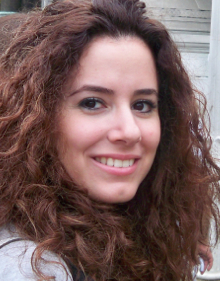
First thing I had to do was study the language of Arabic, thankfully I found a book by an ex-CSM student Rana Abou Rjeily who explains the basics of the language. It was a project that explored how Arabic could be more accessible to beginners and offer a quicker learning pace to the language. It is a very difficult and unforgiving, the complexity in the cursive and connected typeface is definitely where its beauty comes from.

There were attempts in the past by Nasri Khattar and he invented a system called Unified Arabic, which simplified Arabic to the extreme by not only detaching letters but combining all the variations for each letter into one. Unified Arabic was later modified into Basic Arabic by Mourad and Arlette Boutros. In the Arab world there is Classical Arabic which is the most difficult as it’s the traditional form of Arabic found in the Qu’Ran, colloquial Arabic which changes from village to village, region to region and there is Modern Standard Arabic which is used for media and literature across the Arab world. The language is written horizontally from left to right (except numbers), the numeral system is different as well. Each letter changes shape depending on its location in the word: isolated, beginning, middle and end. This is what makes learning so difficult, the words are cursive and the letters change often which doesn’t help distinguishing anything. Then come the diacritical marks which change the letter and its sound. The reason for this is that the language is based only of consonances and the diacritical marks represent vowels. Plus, the letters are separated between solar and lunar letters Uppercase and lowercase don’t exist in Arabic and punctuation is flipped from Latin. The sounds ‘vee’, ‘pee’ and ‘g’ as in gulf don’t exist, so they are replaced with alternatives, e.g. bablo bicasso.

After learning all of this I felt more connected to my language. Since I knew the roots and basics of this language, I felt confident to explore it visually. It’s kind of like method acting, you need to experience it in order to act it out. Personally, it didn’t feel right to take this language and not know a single thing about it. This was one of the reasons that pushed me to study Arabic, it was the lack of knowledge. We see it so much in media and especially living in London we are often surrounded by signs written in Arabic as well as a diverse Arabic community. My first idea for Arabic actually came from the English words with Arabic roots. We use these words daily, especially alcohol and it was this precise word that got my attention
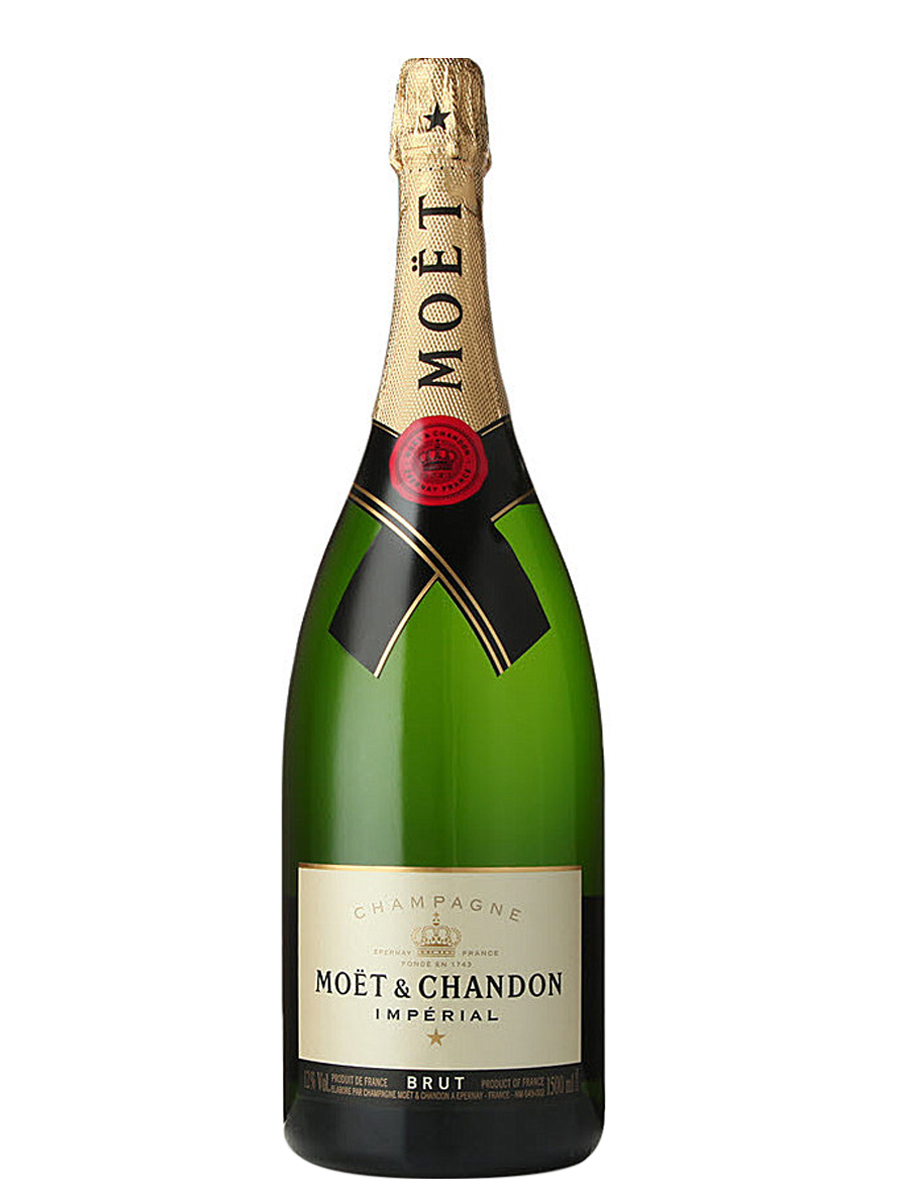
Alcohol, Alghul in Arabic, means evil spirit in Arabic, notice where the word ghoul comes from. It’s believed that drinking empties the soul and leaves space for evil spirits to fill those spaces and taking control of you. You do things out of you control and cause heartache and problems, this is why it is banned in some Arab countries as the Qu’Ran forbids it. I though of making a neon green glowing sign that represented the word and place it in a cemetery. I wanted to film it at the dead of night glowing. This was too ‘on-the-nose’, so I scrapped the idea and moved on. I also thought of making an engraving the word in either metal or wood and filling the grooves with alcohol. This wasn’t culturally sensitive and it’s important when working with a cultural that is not yours to know what you can and cannot do. There is a fine line between racism and controversiality and I didn’t want to overstep my boundaries and offend anyone. This idea was obviously scrapped as well. My final idea went into a complete opposite direction and left the word alcohol behind entirely. Instead I focused on the NGO Skateistan.

The founder and Executive Director Oliver Percovich started Skateistan back in 2007 when he moved to Afghanistan looking for work. He brought 3 skateboards with him and since then has empowered over 1500 children in Afghanistan, Cambodia and South Africa. It is one of the world’s top NGOs and has changed lives for the better. The Middle Eastern country is war torn and before him there wasn’t much hope or future for the street children and children in general of Kabul, the capital. He began in an emptied fountain and slowly saw the impact of how skateboarding brightened the days of the local children. Most of these kids are beggars or work low-wage jobs with no access to education. Over the years, with funding and help from the citizens, Skateistan was born. It educates and empowers children of any social class or ethnicity through skateboarding and schooling. Kids went from being beggars to skate instructors providing for their family. For me what was really special, is how girls benefited immensely from the organisation. This country was radicalised through the harshest interpretations of Shaira law (religious law) effectively degrading women in every way possible. Read A Thousand Splendid Suns by Khaled Hosseini to understand in more detail the situation for Afghan women. They couldn’t leave the house without a male relative or burqas, entirely domesticated and forced to bare children and care for their husband’s every need. Even after the dissolution of the Taliban’s power in the region their ideals are still part of normal life. Girls can’t play sports or access higher education. Skateboarding was a loophole, because it’s seen as a toy and not a sport, that allowed them to practice it freely and above all empowers them. Today 50% of skaters in Afghanistan are female and its the number one female sport.
My idea was to simply make a skateboard and spray paint the word empower in Arabic on the back. I wasn’t sure what the aesthetics would look like, so I researched Afghan traditional art and fell upon embroidery. This is one of the few things women are allowed to do because it is considered housework. These women express themselves through all sorts o garments and tapestries. They play critical role in decorating homes, keeping their families clothed and making religious pieces. I thought this was perfect as it emulated the struggle of being an Afghan woman and how this practice freed them and soothed their oppression. This was their way of blowing off steam, today girls can skateboard and sport it always more effective to ‘get it all out’. I studied this book called ‘Embroidery in Afghanistan’ and found the section I wanted to use for my skateboard. I see how natural it all came together when I was pursing a topic I genuinely cared about. Things fell into place, it doesn’t mean I didn’t encounter hardships, especially when making the skateboard, but passion far outshines the trouble.
FURTHER READING
To get a better understanding of life as an Afghan I wanted to see what it looks like to be from Afghanistan. I borrowed the book Afghanistan: The Land that Was by photographer couple Roland and Sabrina Michaud. Their travels have documented the daily lives of these people before the massive wave of Western influence bringing new clothes, films and habits. I thought it was beautiful to get an all encompassing view of this mystical country. I felt like I understood a bit better the culture of the kids in the Skateistan project. It showed me where the parents and ancestors come from, the diversity of the people, cultures and traditions.
What is impressive and breath-taking is the ruthless landscape. The high mountains, the boiling summers and frozen winters, this isn’t for the faint-hearted. We are spoiled in London with our little drizzles, living through these extreme conditions is a feat in itself. This why I think skateboarding ties so closely with Afghan culture, the sport is very unforgiving and beautiful like the landscape and it takes a lot of practice to get just a little better. A second aspect is the tight-knit and competitive community of skateboarding. Judging from the pictures, sports plays a big part of Afghan culture, from cock-fights to horseback riding, there is a strong sense of showmanship and display of one’s skills.

Just like being Afghan is an extension of your personality, skateboarding is an extension of your body, and you can see how proud these people are to be Afghan like most skaters are proud to be skaters. These are personal opinions I have formed from what I have learned about this country, I may be wrong and I’m opinion to contradiction. I’m just thinking out loud.
Bibliography
Prediagnose (2019) Early Bacterial Detection. Available at: http://www.prediagnose.dk (Accessed: 4 April 2019)
Bassler, B. (2009) How Bacteria “Talk” ,TED Talks.Available at: https://www.ted.com/talks/bonnie_bassler_on_how_bacteria_communicate#t-1060047 (Accessed: 4 April 2019)
AlZahra’a Alatraktchi, F. (2018) The Secret Language of Bacteria, TED Talks. Available at: https://www.ted.com/talks/fatima_alzahra_a_alatraktchi_to_detect_diseases_earlier_let_s_speak_bacteria_s_secret_language?utm_source=newsletter_daily&utm_campaign=daily&utm_medium=email&utm_content=button__2019-03-27 (Accessed: 4 April 2019)
Rjeily, R., A. (2011) Cultural Connectives. Mark Batty Publisher
Fitzpatrick, J. (2012) Skateistan: The Tale of Skateboarding in Afghanistan. Skateistan
Michaud, R., S. (2002) Afghanistan: The Land that Was. Harry, N. Abrams, Inc.
Centlivres-Demont, M. (1976) Popular Art in Afghanistan.
Wittner, B., Thoma, S., Bourquin, N. (2008) Arabesque: Graphic Design from the Arab World and Persia. Gestalten Verlag
Nammour, Y., K. (2014) Nasri Khattar: A Modernist Typotect. Khatt Books
AbiFarès, H., S. (2001) Arabic typography: a comprehensive sourcebook. Saqi Books












